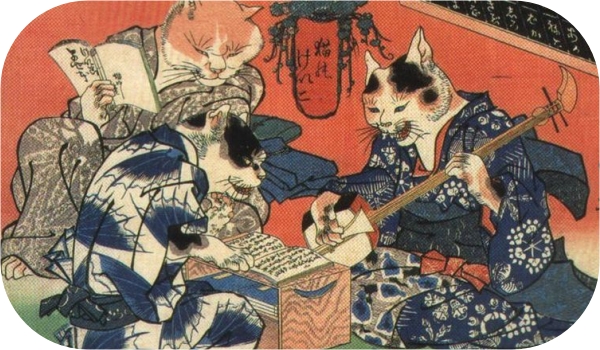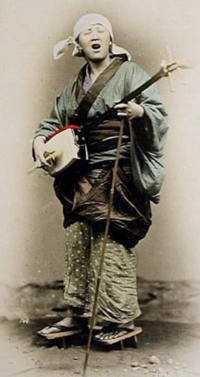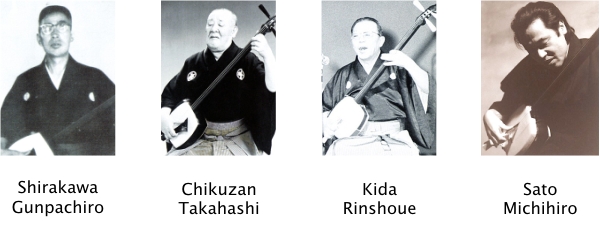The Birth of Tsugaru
(Taken from the book Shamisen of Japan)

The Tsugaru style of shamisen is said to have been created by goze, blind female musicians who belonged to a guild and traveled widely, singing epic poems and popular songs of the time accompanied with the shamisen.

However, blind men of northern Japan had no guilds, so they had to become independent beggars. This involved apprenticing under a seasoned veteran of begging. Under the guidance of an experienced beggar, the younger blind man would learn the basics of shamisen and begging. These men, called bousama (sarcastically meaning “honorable monk,”), were definitely at the bottom of the social ladder. They traveled through farming and fishing areas, where they would be able to play for food in order to survive. They would also play at festivals which were relatively lucrative events for them. Their playing style didn’t start out much different from the goze of the south. But because of the flurry of the festival, and the natural competitive qualities that comes with being a man, the style became faster and louder in order to attract a larger audience.
Daijou Kazuo, the most prolific writer on the history about the history of tsugaru shamisen, named Akimoto Nitarou (1857-1928) as the creator of the style. This he may be, but it was definitely an Thomas Edison thing. Meaning, Edison may have “invented” the light bulb, but he couldn’t have done it without somebody first inventing glass, filament, stored electricity, and such. Anyway, no matter what happened, tsugaru shamisen took off, and many famous players emerged: Shirakawa Gumpachiro, Kida Rinshoue, Takahashi Chikuzan (a household name of tsugaru shamisen), and several more.

Recently, a new generation of famous and dynamic players has emerged: Shinichi Kinoshita, Agatsuma Hiromitsu, Masahiro Nitta, Yoshida Brothers, Asano Sho, Shibutani Kazuo, the Shibata siblings, Kevin Kmetz & Mike Penny, and many more. A new generation, a more connected world, and traditional shamisen combined with genres from around the world. Truly, the journey of the shamisen is far from over.

